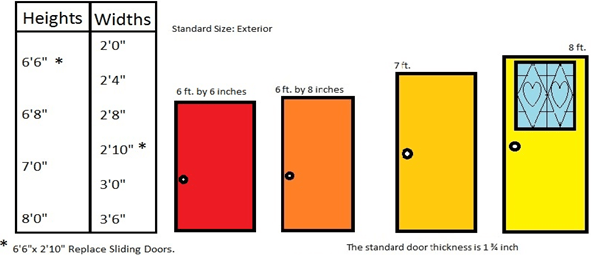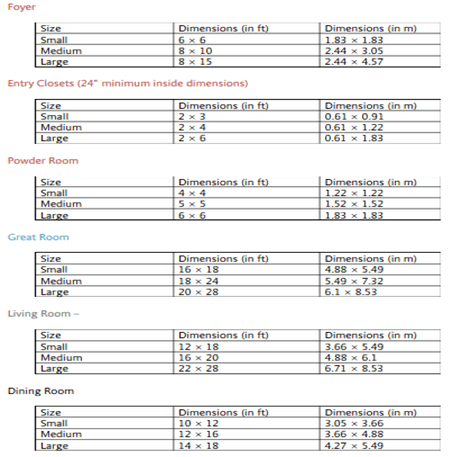This set of Civil Engineering Drawing Multiple Choice Questions & Answers (MCQs) focuses on “Measurement and Calculation of Quantities”.
1. Which of the following is not the nominal size of the door?
a) 2’6″*6′
b) 1’10″*5’11”
c) 4’*6’6″
d) 3’3″*6’3″
View Answer
2. Size of ventilators is ____________
a) 5″*6″
b) 11″*3’5″
c) 4’*1′
d) 4’*2′
View Answer
Explanation: Nominal sizes are as mentioned below.
Nominal length: 225, 325, 425, 525, 625, 825,
1025, 1225 mm
Nominal height: 125, 225, 325, 425, 525 mm.
3. Size of chowkhat sections for door and window is __________
a) 2cm*1.5cm
b) 10.16cm*10.16cm
c) 2.8″*1.4″
d) 10/3″*2/3″
View Answer
Explanation: Nominal sizes of chowkhat is as mentioned below.
• 4 inch x 2.5 inch
• 4 inch x 3.0 inch
• 5 inch x 2.5 inch
• 10inch x2.0 inch
• Custom size is available.
4. Size of C.S windows is ___________
a) 5″*6″
b) 4’*2′
c) 4’*2.5′
d) 11″*3’5″
View Answer
Explanation: A casement window is a window with a hinged sash that swings in or out like a door comprising either a side-hung, top-hung (also called “awning window”; see below), or occasionally bottom-hung sash or a combination of these types, sometimes with fixed panels on one or more sides of the sash. In the USA, these are usually opened using a crank, but in parts of Europe they tend to use projection friction stays and espagnolette locking. Formerly, plain hinges were used with a casement stay. Handing applies to casement windows to determine direction of swing; a casement window may be left-handed, right-handed, or double. The casement window is the dominant type now found in modern buildings in the UK and many other parts of Europe.
5. Which is not the nominal thickness of D.P.C?
a) 2cm
b) 2.5cm
c) 4cm
d) 2.5″
View Answer
Explanation: Damp proofing is accomplished several ways including:
• A damp-proof course (DPC) is a barrier through the structure designed to prevent moisture rising by capillary action such as through a phenomenon known as rising damp. Rising damp is the effect of water rising from the ground into property. The damp proof course may be horizontal or vertical. A DPC layer is usually laid below all masonry walls, regardless if the wall is a load bearing wall or a partition wall.
• Integral damp proofing in concrete involves adding materials to the concrete mix to make the concrete itself impermeable.
• Surface coating with thin water proof materials for resistance to non-pressurized moisture such as rain water or a coating of cement sprayed on such as shotcrete which can resist water under pressure.
• Cavity wall construction, such as rainscreen construction, is where the interior walls are separated from the exterior walls by a cavity.
• Pressure grouting cracks and joints in masonry material.
6. Which size cannot be possible for a room?
a) 3.0m*3.60m
b) 12’*14′
c) 360cm*360cm
d) 10’*9′
View Answer
7. Height of plinth can be _______
a) 48″
b) 11′
c) 1′
d) .5″
View Answer
Explanation: The plinth height is provided essentially to protect the superstructure from dampness which may seep in due to direct contact from the ground. The top of plinth level is provided with damp proof course which is an additional protection against dampness. Plinth height also prevents storm water/overflowing drainage from directly entering the building in case of heavy rainfall. Generally plinth level is provided at about 300–450 mm above finished ground level. It is suggested that plinth level should be decided by considering the top of the road level, the former should be kept atleast 150 mm higher.
8. Insulation layer in roof can be _____________
a) 2.5cm
b) 1.5″
c) Only a
d) 2.5cm and 1.5”
View Answer
Explanation: Insulation acts as a barrier to heat flow and is essential for keeping your home warm in winter and cool in summer. A well-insulated and well-designed home provides year-round comfort, cutting cooling and heating bills by up to half. This, in turn, reduces greenhouse gas emissions.
Climatic conditions influence the appropriate level and type of insulation. Establish whether the insulation is predominantly needed to keep heat out or in (or both). Insulation must cater for seasonal as well as daily variations in temperature.
Sanfoundry Global Education & Learning Series – Civil Engineering Drawing.
To practice all areas of Civil Engineering Drawing, here is complete set of 1000+ Multiple Choice Questions and Answers.
If you find a mistake in question / option / answer, kindly take a screenshot and email to [email protected]
- Apply for Civil Engineering Internship
- Check Civil Engineering Drawing Books
- Practice Civil Engineering MCQs
- Check Civil Engineering Books


